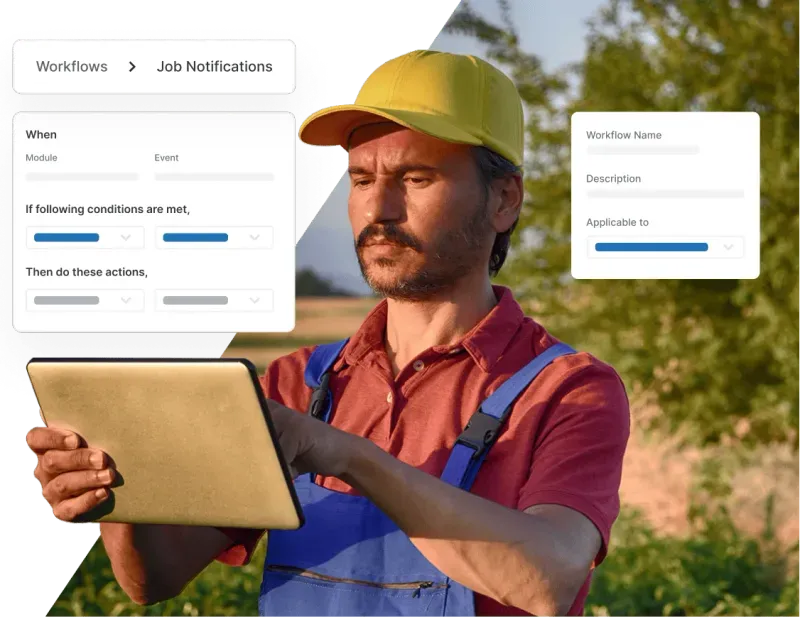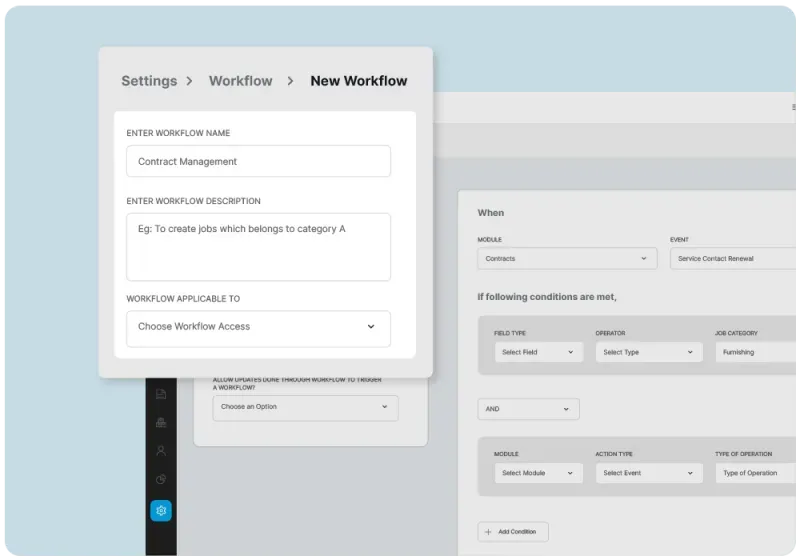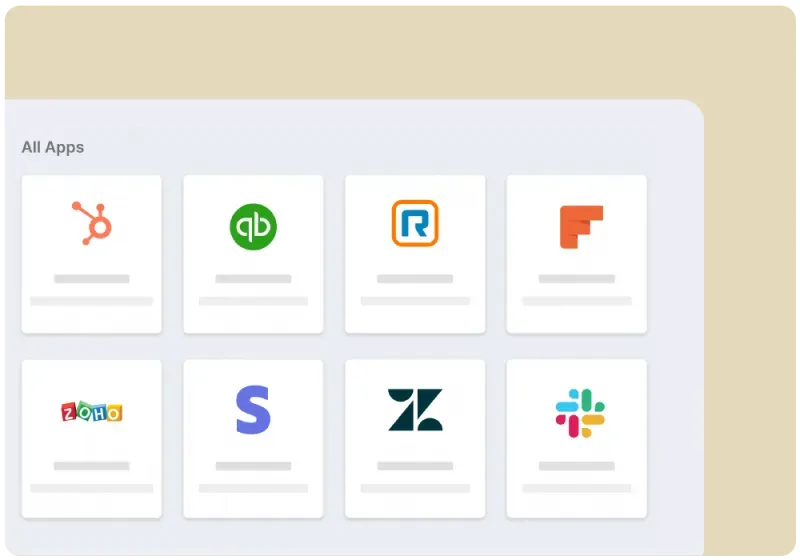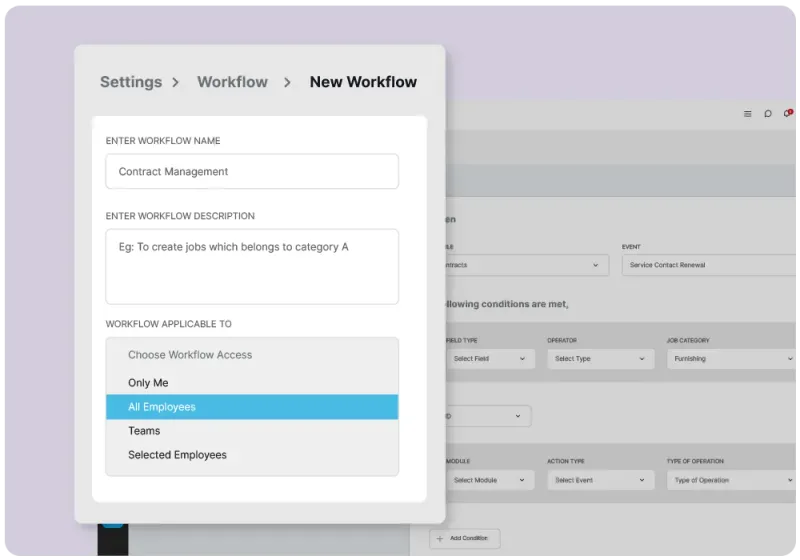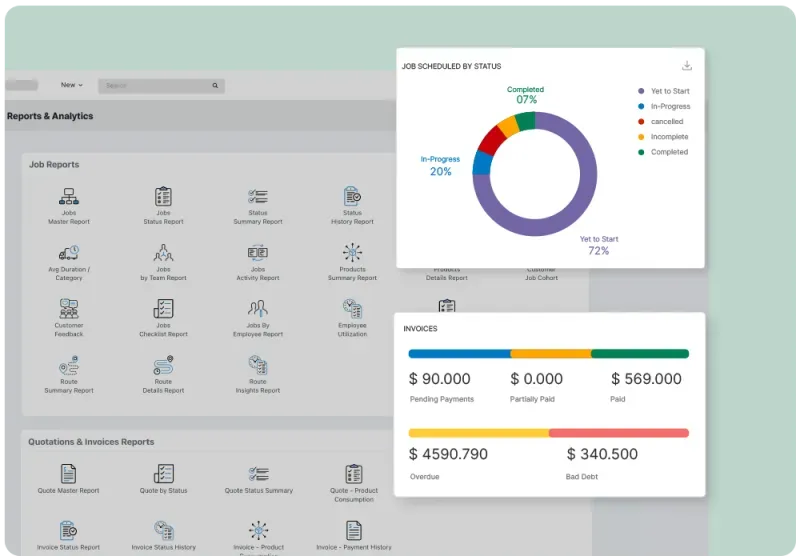Zuper’s work order management system integrates well with Zendesk Support CRM and Zendesk Sell platforms. The Zendesk Support integration enables companies to dispatch their field workforce to work on tickets in just a click. The Zendesk Sell integration, on the other hand, syncs work order updates with a Zendesk Sell deal and brings all customer data into one place.
No, Zuper work order management software is not seamlessly integrated with Salesforce. However, we have a custom integration which pushes Salesforce entries as Zuper jobs. This integration helps companies deliver excellent customer service experiences. In addition to pushing closed sales deals as new work orders, this integration helps create unified customer information across both interfaces.
Users who have permission to create work orders can create a new work order on the Zuper mobile app. Once they click on the job module, they can create a new work order by clicking on the + icon in the bottom right corner of the screen. After entering customer details and job details the user will be prompted to assign a technician and update information about parts and services consumed. Once all this information is filled out, a new work order can be created successfully by clicking on the “create job” button.
Zuper field service management software allows users to create work orders in desktop and mobile apps. Work orders are the heart of Zuper. Work orders are connected to customers, assets, properties, estimates, and invoices. Users can manage their existing work orders through the job module available in the desktop version and the Zuper mobile app. Users associated with the specific work order will be able to edit the work order, and others will have permission to view the work order.
There are four different work order types: preventive, corrective, scheduled, and Unscheduled. Preventive orders or maintenance are pre-planned tasks that are performed promptly to prevent equipment failure. This type of work order minimizes problems and keeps equipment up to speed. Corrective orders or breakdown repairs should be completed as soon as possible to minimize losses in production time and money. Scheduled work orders are for services that have been pre-approved and scheduled in advance. Unscheduled work orders are required as soon as customers discover problems.
The time it takes to create a work order depends on how well your team works together. To save yourself time and effort, make sure everyone involved in submitting a work order knows exactly what information is required, how to update the system fields, and when to expect their requests to be fulfilled.
Work order management systems help companies keep track of ongoing jobs and organize tasks so that everything gets done on time. Companies use work order management systems for scheduling and documenting their maintenance, repair, construction, and installation services. In short, it’s both a blueprint and a repository that stores all work orders in one place. Some work order systems are general-purpose, and others are specialized for certain types of businesses or industries. If you want to streamline your operations or improve the efficiency and productivity of your field workforce, one way to do that is by implementing an effective work order management system.
